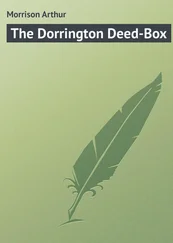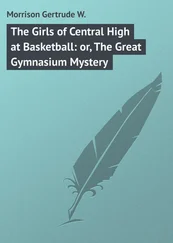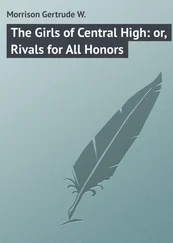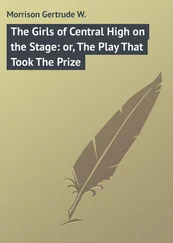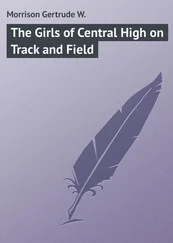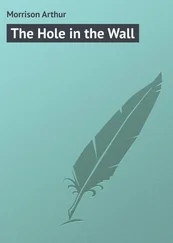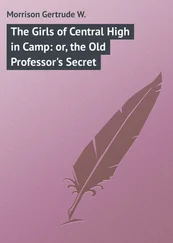As the tsunami approached the camera, Pimalo spoke to the anchorman through the microphone, “Are you seeing this, Phil?” Kai couldn’t hear the response, but her rapt attention told him it was getting through.
When the video went to black, Kai motioned for her to put the camera on him.
“Ms. Pimalo, I’d like to make another statement.”
“Of course, Dr. Tanaka. Those were incredible pictures.”
Kai thought to himself, It’s about to get a lot more incredible . He couldn’t believe he was about to say it on national television, with the possibility of making a fool of himself. After a moment of hesitation, he saw Brad and Reggie look at each other. They both nodded at Kai’s unspoken question, and he felt some comfort knowing they were with him. He cleared his throat and began speaking.
“My name is Kai Tanaka, and I am the assistant director of the Pacific Tsunami Warning Center in Ewa Beach, Hawaii. About forty minutes ago, I issued a tsunami warning for the Hawaiian Islands. I cannot overemphasize how dangerous this situation is. To this point, we have not released the cause of this tsunami because we did not have the data to verify it. However, I am concerned that the evacuation is not moving fast enough because people don’t understand how unusual this tsunami is. At 8:41 a.m. this morning Hawaii time, we suspect that a meteorite struck the central Pacific Ocean. If this turns out to be true, we can expect a disaster of unprecedented scale for the Hawaiian Islands because meteor strikes can generate gigantic waves, much larger than those from earthquakes. As we speak, the southern tip of the Big Island should be experiencing the brunt of the first wave. In a little more than fifteen minutes, it should reach Kona and then Hilo. Fifteen minutes after that, Honolulu will be hit.”
One TV was set to a local station broadcasting the EAS and the other continued the feed from Waikiki. Neither of them showed video from the southern tip of Hawaii.
The phone rang yet again, and Brad picked it up.
“Excuse me, Dr. Tanaka,” said Pimalo, “but these are incredible assertions. What evidence do you have that a meteorite struck the Pacific this morning?”
This was the touchiest part of the interview. Kai knew that if he went into a lot of detail, he might lose the viewer. But he also knew that the audience needed something if they were to believe this crazy notion.
“We have very little time left, so I don’t want to go into all of the details. We don’t have any direct evidence to support—”
“You do now,” Brad broke in, putting his hand over the receiver. “Gail Wentworth from NOAA is on the line. You have eight images in your e-mail that they’re about to release to the news agencies. It’s a series of shots from Landsat-8 showing a massive explosion in the central Pacific. NASA is confirming that we were hit by an asteroid.”
10:47 a.m.
35 Minutes to Wave Arrival Time
In the cockpit of his Cessna, Matthew Perkins frowned. Nobody seemed to be listening to his warning, even though he was flying low enough to be easily heard. On one of his passes, he told the kayakers below to wave with both hands if they could hear him. They simply looked up as he flew past. Perkins opened the window of the plane, stuck the handset out of the window, and keyed it to on. The resulting feedback should have been loud enough to hear even over the roar of the engine. Nothing.
Damn! The loudspeaker wasn’t working, he realized. The past twenty-five minutes of warning passes hadn’t been heard by anyone. He radioed in to Civil Air Patrol headquarters to tell them about the problem and that no one off the Waikiki coast had yet been warned by the CAP.
As he set a course back to the airport to fix his loudspeaker, he was informed that another plane was on the way to Waikiki to take over.
“Wouldn’t NASA see an asteroid headed toward earth?” Pimalo asked as Kai went to his computer. “We should have heard about this days ago, maybe even months ago.”
Reggie scooped up one of the memos from his desk and pointed at the text.
“You see the period at the end of that sentence? Now imagine being two miles away from it. That’s what it’s like trying to find a five-hundred-meter-wide asteroid that’s five million miles away.”
“But as it gets closer to earth, wouldn’t it get easier to see?”
“Asteroids move at twenty-five thousand miles per hour. It would get here in less than ten days. And there aren’t nearly enough telescopes around the world to find every chunk of rock flying around out there. In 2002, an asteroid came within seventy-five thousand miles of earth, well within the orbit of the moon. The asteroid was one hundred meters in diameter, big enough to destroy a major city if it had collided with earth.”
“But it missed,” Pimalo said.
“Right. Barely. But the date of closest approach was June 14. The asteroid was detected on June 17. Three days after it had gone by. It’s completely believable that the first we would know about an asteroid was after an impact. In fact, it’s lucky it hasn’t happened up until now.”
Kai’s e-mail pinged, and there was the message from Gail Wentworth. Eight JPEG images were attached to the e-mail. Pimalo’s cameraman shot over Kai’s shoulder as he opened the pictures.
He clicked through them in the sequence that Wentworth had labeled them. The first image showed a viewpoint looking straight down on a mass of clouds covering a wide swath of the Pacific. Two barely visible lines could be seen over the storm, as if someone had slashed a pen across the picture. At the bottom right, a time stamp showed GMT 18:40:00.
Kai pointed at the numbers and said, “Greenwich Mean Time, which is ten hours ahead of Hawaii. That would make the time 8:40 a.m. in Honolulu.”
In the photo stamped 18:40:30, the previous two lines were gone, but taking their place was a much brighter line, and Kai finally understood what he was seeing: the trails of asteroids burning up in the atmosphere.
“It wasn’t just one meteor,” he said. “It was a meteor shower.”
Reggie pointed at the bright trail in the second picture. “That one must have caused our earthquake. If the first two were small enough, they would have exploded before they hit the water.”
“They all must have been pieces of the same asteroid,” Kai said.
“Just like Shoemaker-Levy,” Reggie said. When he got puzzled looks from the others, he went on. “It was a comet that hit Jupiter in ’94. It didn’t hit all at once but in pieces. Looks like the same thing might have happened here, but the first two pieces were small. Relatively.”
“Any of them could have destroyed the airliner,” Kai said.
Reggie nodded. “Sure, but the third one—the one that caused the bright streak in that second photo—was big enough to make it intact all the way to the seafloor.”
Kai could hardly imagine the amount of energy it would take to enable an asteroid to plunge more than three miles to the bottom of the ocean and cause a major earthquake. For a moment, his finger hovered above the mouse. He dreaded what he would see next, but he forced himself to continue through the photos.
In the third picture, the line was gone, replaced with a small bright dot at the center of the storm clouds.
As Kai opened each successive image, which the time stamp showed to be in thirty-second increments, the dot grew larger until, in the final image, the explosion was plainly visible for what it was: the asteroid strike ejecting billions of tons of superheated rock and steam into the atmosphere. On this last image, Wentworth had drawn a line parallel to the explosion and under it had written:
Читать дальше





